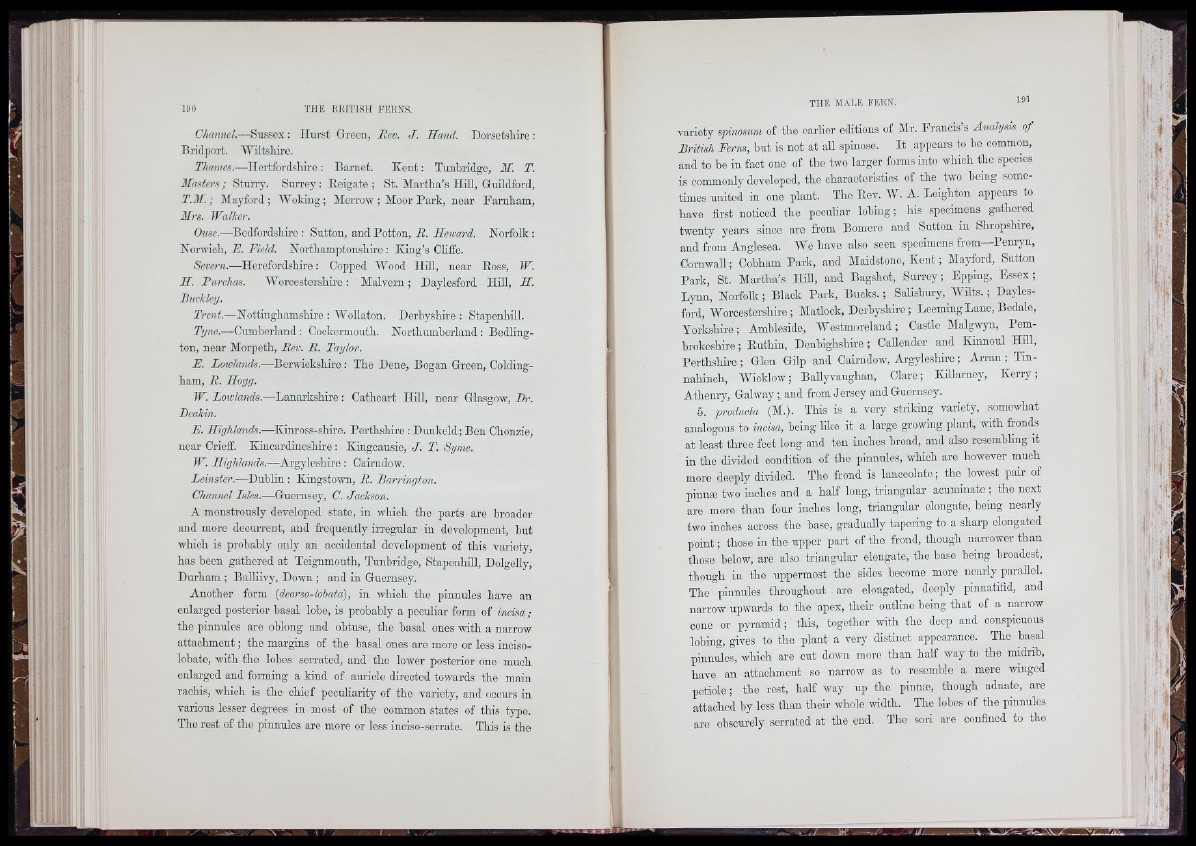
I I - I
i ó i.|f
|í i i *'
! I !
Channel.—Sussex: Hurst Green, Rev. J . Hand.
Dorsetshire ;
Bridport. Yhltshiro.
Thames.—Hertfordshire: Barnet. K e n t: Tunbridge, M. T.
Masters; Sturry. Surrey; Eoigate ; St. Martha’s Hill, Guildford,
T .M .; Mayford ; IVoking; Morrow ; Moor Park, near Farnham,
Mrs. Walker.
Ouse.—Bedfordshire : Sutton, and Potton, R. Heward.
Norfolk :
Norwich, E. Eield. Northamptonshire ; King’s Cliffe.
Severn.—Herefordshire: Copped IVood Hill, near
Eoss,
w .
II . Furchas. Worcestershire : Malvern; Daylesford
iim .
II.
Buchleij.
Trent.—Nottinghamshire : IVollaton. Derbyshire : Stapenhill.
Tyne.—Cumheiiand: Cockermouth. Northumberland; Bedling-
ton, near Morpeth, Rev. R. Taylor.
E. Lowlands.—Berwickshire: The Done, Bogan Green, Colding-
ham, R. Hogg.
W. Lowlands.—Lanarkshire: Cathoart Hill, near Glasgow, Br.
Dcakin.
E . Ilighlands.—Kinross-shiro. Perthshire; Dunkeld; Ben Chonzie,
near Crieff. Kincardineshire : Kingcausie, J . T. Syme.
W. Highlands.—Argylcshire : Cairndow.
Leinster.—Dublin : Kingstomi, R . Barrington.
Channel Lsles.—Guernsey, C. Jackson.
A monstrously developed state, in which the parts are broader
and more decurrent, and frequently irregular in development, hut
which is probably only an accidental development of this variety,
has been gathered at Teignmouth, Tunbridge, Stapenhill, Dolgelly,
Durham ; Balliivy, Down ; and in Guernsey.
Another form {deorso-lohata), in which the pinnules have an
enlarged posterior basal lobe, is probably a peculiar form of incisa;
tbe pinnules are oblong and obtuse, the basal ones with a narrow
attachment; the margins of the basal ones are moro or less inciso-
lohate, with the lobes serrated, and the lower posterior one much
enlarged and forming a kind of auricle directed towards the main
raohis, which is the chief peculiarity of the variety, and occurs in
various lesser degrees in most of the common states of this type.
The rest of the pinnules are more or less inciso-serrate. This is the
I
variety spinosum of the earlier editions of Mr. Francis’s Analysis of
British Ferns, but is not at all spinose. I t appears to be common,
and to be in fact one of the two larger forms into which the species
is commonly developed, the characteristics of the two being sometimes
united in one plant. The Eev. W. A. Leighton appears to
have first noticed the peculiar lohing; his specimens gathered
twenty years since aro from Bomere and Sutton in Shropshiie,
and from Anglesea. We have also seen specimens from—Penryn,
Cornwall; Cohham Park, and Maidstone, K e n t; Mayford, Sutton
Park, St. Martha’s Hill, and Bagshot, Surrey; Epping, Essex;
Lynn, Norfolk; Black Park, Bucks. ; Salisbury, Wilts. ; Daylesford,
Worcestershire; Matlock, Derbyshire ; Looming Lane, Bedale,
Yorkshire; Ambleside, AVestmoreland; Castle Malgwyn, Pembrokeshire
; Euthin, Denbighshire; Callender and Kinnoul Hill,
Perthshire ; Glen Gilp and Cairndow, Argylcshire ; Arran ; Tin-
nahinoh, Wicklow; Ballyvaughan, Claro; Killarney, Kerry;
Athenry, Galway; and from Jersey and Guernsey.
5. producta (M.). This is a very striking variety, somewhat
analogous to incisa, boing like it a large growing plant, ivith fronds
at least throe feet long and ten inches broad, and also rosemhling it
in the divided condition of the pinnules, which are however much
more deeply divided. The frond is lanceolate ; the lowest pair of
pinnæ two inches and a half long, triangular aouminate ; tho next
are more than four inches long, triangular elongate, hoing noarly
two inches across the base, gradually tapering to a sharp elongated
point ; those in tho upper part of the frond, though narrower than
those below, aro also triangular elongate, the base being broadest,
though in the uppermost tho sides become more nearly parallel.
The pinnules throughout are elongated, deeply pinnatifid, and
narrow upwards to the apex, thoir outline hoing that of a narrow
cone or pyramid ; this, together rvith the deep and conspicuous
lohing, gives to the plant a very distinct appearance. The basal
pinnules, which are cut dovm more than half way to the midnb,
have an attachment so narrow as to resemble a mere winged
petiole ; the rest, half way up the pinnæ, though adnate, are
attached by loss than their whole width. Tho lobes of the pinnules
are obscurely serrated at the end. The sori are confined to the
-'•IV I
I
■ \
I il
f ,«i |